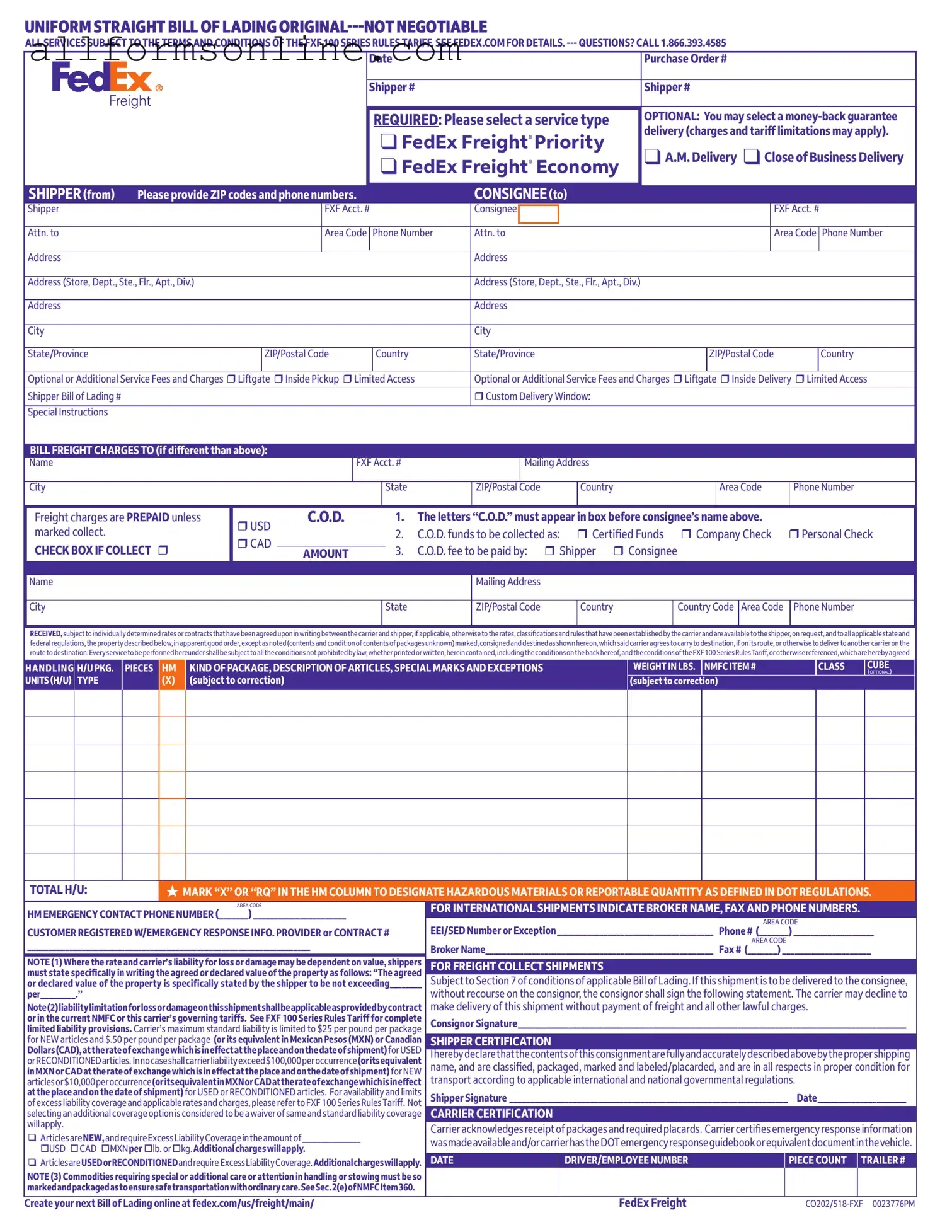What is a FedEx Bill of Lading?
A FedEx Bill of Lading is a document that serves as a receipt for goods being shipped. It outlines the details of the shipment, including the sender and recipient information, service type, and any special instructions. This document is crucial for tracking shipments and ensuring that all parties understand the terms of transport. It also includes important information about freight charges and liability limits.
How do I fill out the FedEx Bill of Lading form?
To fill out the FedEx Bill of Lading form, start by entering the date and purchase order number at the top. Next, provide details for both the shipper and consignee, including names, addresses, and contact information. Select the service type you wish to use, such as FedEx Freight Priority or Economy. If applicable, indicate any additional services, like liftgate or inside delivery. Don’t forget to specify how freight charges will be paid and include any necessary C.O.D. information if you are collecting payment upon delivery.
What should I do if I have questions while filling out the form?
If you have questions while completing the FedEx Bill of Lading form, you can call the FedEx customer service number at 1.866.393.4585. Their representatives can help clarify any points of confusion and guide you through the process. Additionally, you can visit the FedEx website for more detailed information about the form and its requirements.
What happens if I don’t select additional liability coverage?
If you choose not to select additional liability coverage when shipping, your shipment will be subject to standard liability limits. For new articles, the maximum liability is typically limited to $25 per pound per package. For used or reconditioned items, it is limited to $0.50 per pound per package. Not selecting additional coverage is considered a waiver of excess liability, meaning you may not receive compensation for loss or damage beyond these limits.
